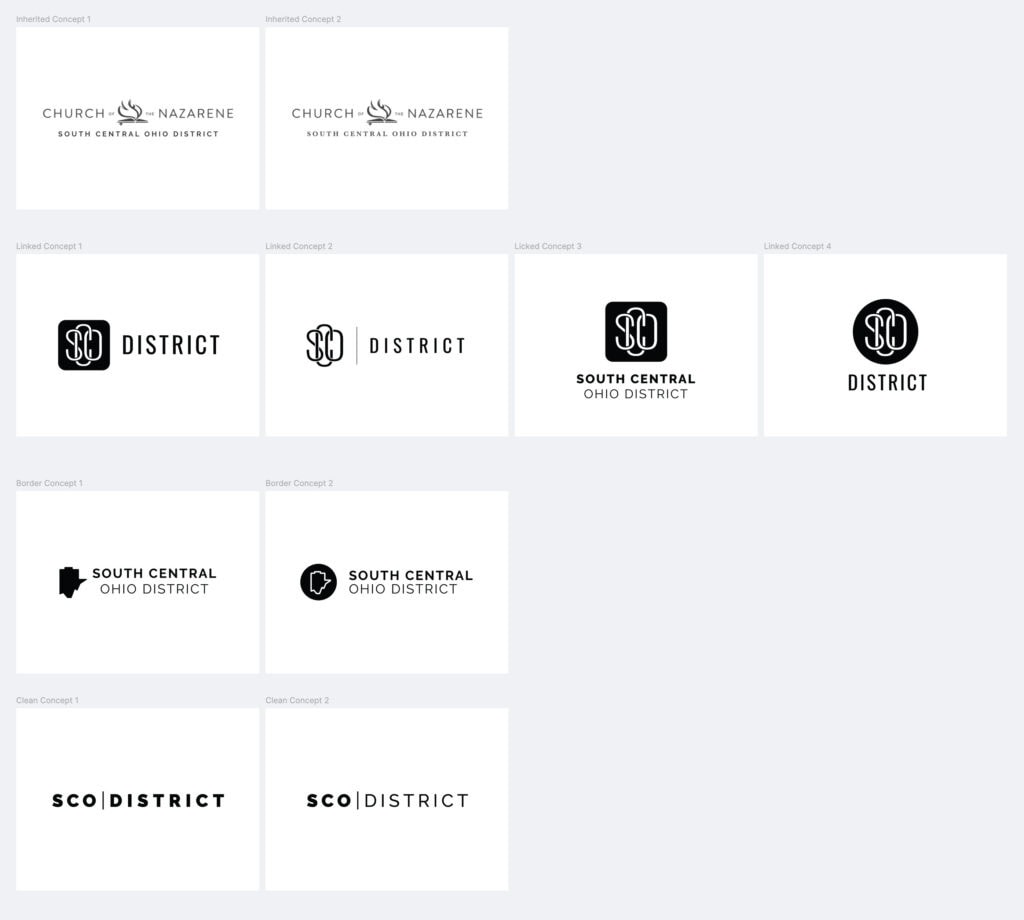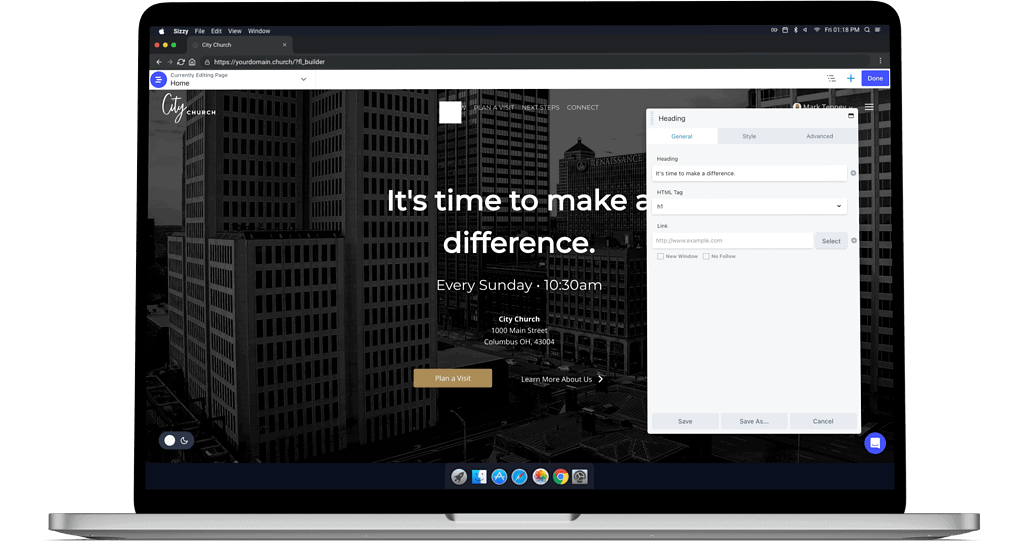Local churches are often a part of a larger group of churches. It could be a denomination or another organization that keeps churches connected, assists with transitions in leadership, or provides a level of accountability to the local churches who are a part of it. In the Church of the Nazarene, there are districts with leadership made of up pastors from the local district, district staff, and a district superintendent who oversees the district. The South Central Ohio District stretches from central Ohio to the Ohio River and represents about 60 churches in the Church of the Nazarene.
We worked with the District Superintendent and other district leaders to completely redesign, reorganize, and build a brand new website from scratch. This also included a new logo for the district, writing new text copy for the website, and further developing our locations feature to provide a listing of the churches on the district.
Discovery
Our discovery phase kicks off with a two-hour workshop. During this workshop, we met with the District Superintendent, Dr. Sam Barber (who is also the author of A People of Grace), and other district leaders to uncover as much as we could about their organization. We start very broadly and dig deeper as we go. Here’s the first question we asked:
What are your goals for this project?
Dr Barber spoke up, saying he wanted the website to be a “one-stop shop for the district–a place for people to find answers to any questions they have about the district, find resources, and contact information for key people.” He also mentioned the importance of a website that looked attractive and seemed to be high quality.
We had some of the same goals for this project as well. As we dug into this question a little deeper, though, we decided that one important thing we should consider is building a website that would communicate the authentic personality of the district to potential pastors who may want to pastor a church on the district.
The district serves as a support system for local pastors who might otherwise feel isolated at the top of the leadership in their local church. There is practical ministry training, ongoing education, and prayer support available to the pastors, as well as friendship and encouragement among them.
Another item we needed to pay close attention to was ministry resources for the churches on the district. In fact, Nazarene Churches on other districts often came to the SCO District website in search of resources for Bible Quizzing, youth ministry, and kids ministry. So we needed to develop a strong system of downloadable resources. Luckily, our platform already had what we needed to do this.
Strategy
During our strategy phase, there are always two key components that we need to build an effective website. The first is a visual sitemap of content. It maps out all the pages or post templates we need to design, including the content outline for each one. Another item we always design is a stylescape, which is a design asset that gives us a general look and feel for the project. It’s not a specific or involved as a full brand guide, but it gives us a good sense of the design language we will use on the project.
Before we could finalize our stylescape, though, we needed to design a new logo for the district. Here are the intial concepts we presented to them:

After reviewing the logo concepts we presented, the district decided to use the concept that used an outline of the district boundary. This drew from the previous logo, but presented it in a fresh, new way. With that in mind, we presented them with a stylescape to translate their logo into a complete look.

In addition to the logo and stylescape, we needed a clear plan for the content on the site. We build our sitemaps in Figma using a system we have developed from scratch.
With a proper plan in place, traffic can flow through a website from page to page in a logical way without the need of header/footer navigation. That isn’t to say that we don’t use navigation, but we want that to serve as a fallback, not as the primary way users move through the site. We want to craft a story as they work through the website, engaging the content in a logcal and compelling way. This leads to more time spent on the site and a better overall experience.
Here’s the sitemap we utilitized for this project.

Build
Once the strategy was approved, our team began building the new website for the South Central Ohio District on Digital Church. First, we had our web designer layout all the pages using stock photography, boilerplate filler text, and the stylescape we designed in the strategy phase. Once he had all the pages laid out, our writer provided text copy for each page.
One section we needed to develop for this client was the locations feature on Digital Church. This is something we had been developing with multisite churches in mind. Now we needed to put it to use. We designed a listing page with all the churches on the district featured. Each church had it’s own page as well that displays the address, pastor, and website for the church.
Another section we developed further for this client was the resources section. For Bible Quizzing alone, they have six annual cycles they go through. They are:
- Genesis
- Exodus
- Joshua, Judges, & Ruth
- Samuel
- Matthew
- Acts
Each cycle has up to 100 resource downloads that are available to local churches to support their Bible Quizzing team. We needed to be able to organize all these resources in a way that made it easy for churches to find and access the resources they need.
In addition to resources for Children’s Bible Quizzing, we needed to be able to resources pastors and local churches with reporting forms, credentials and licensing forms, and other downloadable files they might need.
Revisions
Once our team completed the first draft of the website, we invited the clients to submit revisions using our commenting tool. The commenting tool we use allows clients to pin comments directly on the website, upload new images or files as needed, and comment among themselves on particular content and design decisions. Once all the comments were resolved, we were ready to launch.
Launch
The South Central Ohio District decided to keep our team on hand for ongoing content updates using our unlimited development plan. With this plan, not only do we host and maintain the website at a technical level, but our team is available to make an unlimited number of content updates to the site. It’s like having a whole web team on hand whenever you need it.
If you’d like to browse their website a bit, check it out at sconaz.org.


